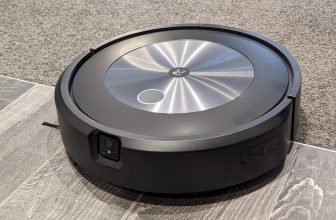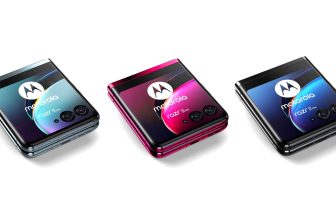
Detailed Review of Nikon Z8 Mirrorless Camera
Overview of Nikon Z8 Mirrorless Camera
Nikon has been producing top-quality cameras for years, and their latest offering, the Nikon Z8, is no exception. This mirrorless camera has been touted as one of the best cameras Nikon has ever produced. But is it really? In this article, we shall review the Nikon Z8 camera and compare it to Nikon’s other mirrorless camera, the Nikon Z9. We shall also delve into the features, image quality, battery life, and suitability of the Nikon Z8 camera for various types of photography.
What is the Nikon Z8 Camera and How Does it Compare to the Nikon Z9?
What are the Main Differences Between the Z8 and Z9?
The Nikon Z8 is still a relatively new camera, and as such, there hasn’t been a lot of information released about it. However, from the little that has been released, we know that the Nikon Z9 is Nikon’s flagship mirrorless camera, while the Z8 is a baby Z9.
One of the significant differences between the two cameras is that the Nikon Z9 has a mechanical shutter while the Z8 lacks this feature. Additionally, the Nikon Z9 has 8K video capabilities, while the Z8 can only shoot 4K videos.
What are the Similarities Between the Z8 and Z9?
Both cameras share many features, including a full-frame sensor and the same custom processor. They also both use Z mount, which means they can use the same cameras and lenses.
Another similarity between the two cameras is their autofocus performance. The Z8’s autofocus performance is as good as the Z9’s. Both cameras can shoot at 120fps in 10-bit ProRes.
What Features of the Z8 Make it a Great Camera?
While the Nikon Z8 may lack some of the features found on the Nikon Z9, it still packs a considerable punch. The camera capable of taking excellent quality photos with its 45-megapixel full-frame sensor. It also has excellent dynamic range, comparable to the Nikon D850, which is a highly sought-after DSLR camera.
The camera’s USB-C port makes it easy to transfer photos and videos to a computer, and it also has an SD card slot and a CFexpress card slot. These features make the camera a great choice for professional photographers who need to transfer their content quickly.
What is the Image Quality of the Nikon Z8 Mirrorless Camera?
How Does the Z8’s Sensor Perform in Low Light Situations?
The Nikon Z8 Mirrorless Camera sensor performs exceptionally well in low light. With an ISO range of 64-25600, the camera performs exceptionally well, even in low light situations. The camera’s dynamic range is commendable, and with the right settings, one can achieve excellent results.
How Does the Autofocus Performance of the Z8 Compare to Other Cameras?
As earlier mentioned, the autofocus performance of the Nikon Z8 Mirrorless Camera is excellent and is on par with other high-end mirrorless cameras like the Sony A7R III. The autofocus system on the Z8 uses 493 phase-detection points and covers 90% of the frame horizontally and vertically. The camera can autofocus in low light situations, making it an excellent addition to a photographer’s gear.
What Type of Still Photography Is the Z8 Best Suited For?
The Nikon Z8 Mirrorless Camera is suitable for different types of still photography. It can be used for portrait photography, landscape photography, and street photography. The camera’s 45-megapixel full-frame sensor and excellent dynamic range make it an ideal choice for landscape photographers. On the other hand, portrait photographers would appreciate the camera’s autofocus performance, which allows them to capture their subject’s face with excellent clarity.
What are the Other Features of the Nikon Z8 Mirrorless Camera?
How is the Battery Life of the Z8 in Comparison to Other Cameras?
The Nikon Z8 Mirrorless Camera has a battery life of 430 shots per charge, which is less than the Z9. However, it is still a decent battery life, and most photographers should have no problems using the camera over a prolonged shooting session.
Does the Z8 Have Issues with Overheating?
Currently, there is little information on whether the Nikon Z8 Mirrorless Camera experiences overheating issues. This is possibly because the camera is still quite new in the market, and there hasn’t been a lot of use to determine if overheating is an issue. However, based on how the camera is built, we can assume that it will not experience overheating issues.
What Type of Memory Card Does the Z8 Use?
The Nikon Z8 Mirrorless Camera uses an SD card slot and a CFexpress card slot. The two types of card slots make it easy for photographers to store their content on cards they already own or new cards they may want to purchase.
Who is the Nikon Z8 Mirrorless Camera Best Suited For?
Is the Z8 a Suitable Camera for Wildlife Photography?
The Nikon Z8 Mirrorless Camera is an excellent choice for wildlife photographers. The camera’s autofocus performance allows photographers to capture wildlife with great clarity. Additionally, the camera’s 8K video capabilities mean that wildlife videographers can capture some of the most stunning wildlife footage ever.
Is the Nikon Z8 Mirrorless Camera a Good Camera for Professional Photographers?
The Nikon Z8 Mirrorless Camera is a great camera for professional photographers. It has a 45-megapixel full-frame sensor and excellent dynamic range, making it an ideal camera for a variety of shooting situations. The camera is also relatively affordable, especially compared to the Z9, making it accessible to a broader range of professional photographers.
Is the Z8 a Good Camera for DSLR Shooters Looking to Switch to Mirrorless?
The Nikon Z8 is an excellent camera for DSLR shooters looking to switch to a mirrorless camera. The camera’s build quality and controls have a similar layout to the Nikon D850 DSLR camera. This makes it easier for photographers to switch between the two cameras seamlessly.
Specifications
| Max resolution | 8256 x 5504 |
| Image ratio w:h | 1:1, 3:2, 16:9 |
| Effective pixels | 46 megapixels |
| Sensor photo detectors | 52 megapixels |
| Sensor size | Full frame (35.9 x 23.9 mm) |
| Sensor type | Stacked CMOS |
| Max resolution | 8256 x 5504 |
| Image ratio w:h | 1:1, 3:2, 16:9 |
| Effective pixels | 46 megapixels |
| Sensor photo detectors | 52 megapixels |








